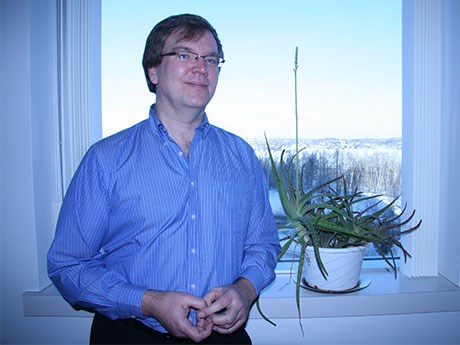Software produces a series of drill plans based on varying budgets and conversion goals
Several years ago when MIRARCO Mining Innovation was introducing stereoscopic visualization technology to Goldcorp, former president and CEO Rob McEwan asked MIRARCO’s Andrew Dasys if there was a way to determine the value of a drill hole.
Dasys, a mining engineer heading up MIRARCO’s work on immersive 3D visualization, didn’t have an answer, but the question stuck in his mind.
Drill holes provide value by moving resources from inferred to indicated and from indicated to measured categories.
“When you go to market, increasing the quantity of indicated and measured resources is incredibly valuable because it shows there’s a significant quantity of work that has been done,” said Dasys.
More resources in the indicated and measured categories increases the level of confidence in the mineralization reported.
The National Instrument 43-101 criteria for moving resources from one category to another have to do with the quantity of sampling that has been done and the amount of ground covered.
After three years of developing the necessary algorithms, Dasys, now president of Objectivity, came up with a software solution that supports drill hole layout and planning.
Called DRX, short for Drilling, Reporting and Targeting, the software systematically produces a series of drill plans based on varying budgets or conversion goals while meeting specified technical constraints.
“Normally, geologists use modeling software to put in a series of holes one by one,” said Dasys. “We say, ‘don’t worry about the single hole. Tell us what the goals and constraints are and DRX will provide the solution.’”
Having designed a drill plan, geologists can’t easily come up with different options because” they’ve already formulated an idea in their head,” said Dasys.
“The computer doesn’t have that problem. It can come up with a completely different, yet just as valuable solution.
Just by moving a hole a few degrees, you can increase the volume of mineralization you can move into a higher category.”
Using DRX, Objectivity takes a drill plan and either tweaks it to increase the volume of ground that can be moved into higher categories, or produces the same targeted resource metrics by decreasing the quantity of drilling and the footprint on the environment.
“In every case, we outperform the human solution because it’s very difficult to lay out a series of holes in 3D without having overlapping volumes,” said Dasys. “Each hole provides a sample, but you may already have a sample from another hole, so it’s redundant. We maximize the value of the information that each metredrilled produces.”
A demonstration of DRX using a drill plan provided by Royal Nickel Corp. for its Dumont nickel project in Amos, Quebec, highlights the value of the software.
A manually designed Royal Nickel layout based on 64 holes and 9,673 metres of drilling from surface provided an expected conversion rate of 2,975 cubic metres per metre drilled.
One DRX option based on 54 holes and 6,421 metres of drilling converted an expected 4,067 cubic metres per metre drilled, accounting for 90 per cent of the expected manual tonnage converted using 66 per cent of the manual plan’s drilling, and producing a saving of $455,280.
The expected conversion of ground was independently determined by SRK Canada’s Sebastien Bernier, the qualified person responsible for Royal Nickel’s feasibility study resource calculation.
“I was skeptical that DRX would make a significant difference, but I was pleasantly surprised,” remarked John Korczak, manager of mineral resources and technical services at Royal Nickel. DRX can be used to optimize drill layout for both surface and underground drilling.
“Drilling underground is very different,” explained Dasys. “Underground, there are very few places you can drill from, so you set up a drill and tend to drill quite a few holes from that one setup. Often, geologists can’t complete a drilling program underground because operations and engineering force them to move their drills.”
Using DRX, the cost of such a move can be quantified, noted Dasys.
“On surface, you tend to put down a single hole and then move, but there’s a cost to set up a pad and there’s an environmental cost, too, because you’re disturbing the ground.”
Objectivity launched DRX at last year’s PDAC and has already done work with four clients. The timing could have been better given the downturn in the market, but “there is interest out there, and oddly enough we’re getting more interest internationally than locally,” said Dasys.



.jpg;w=120;h=80;mode=crop)